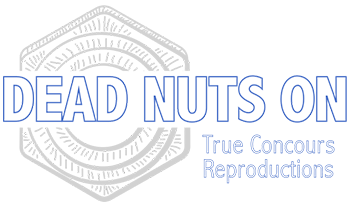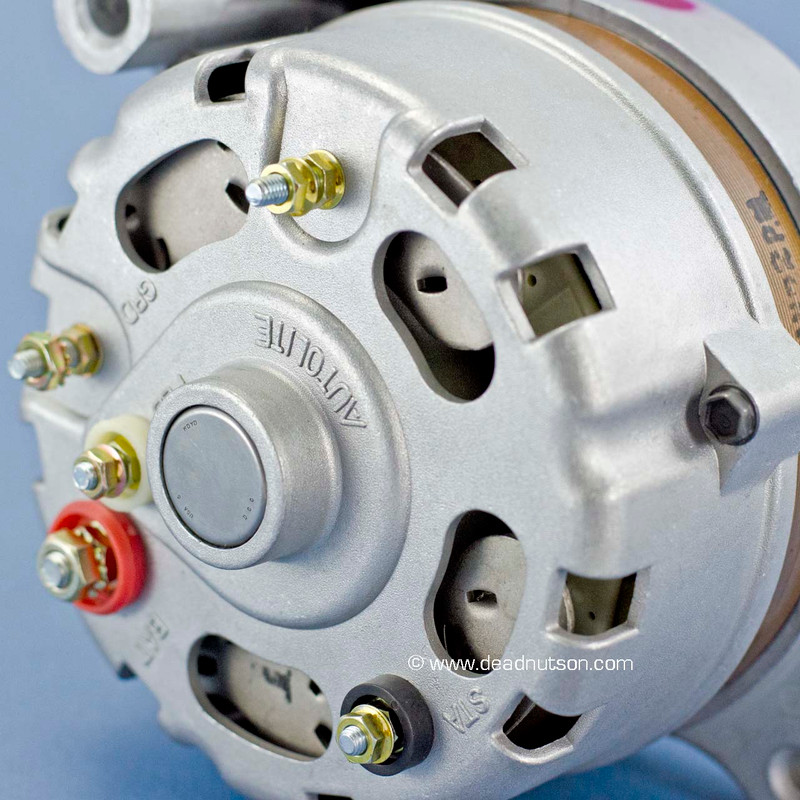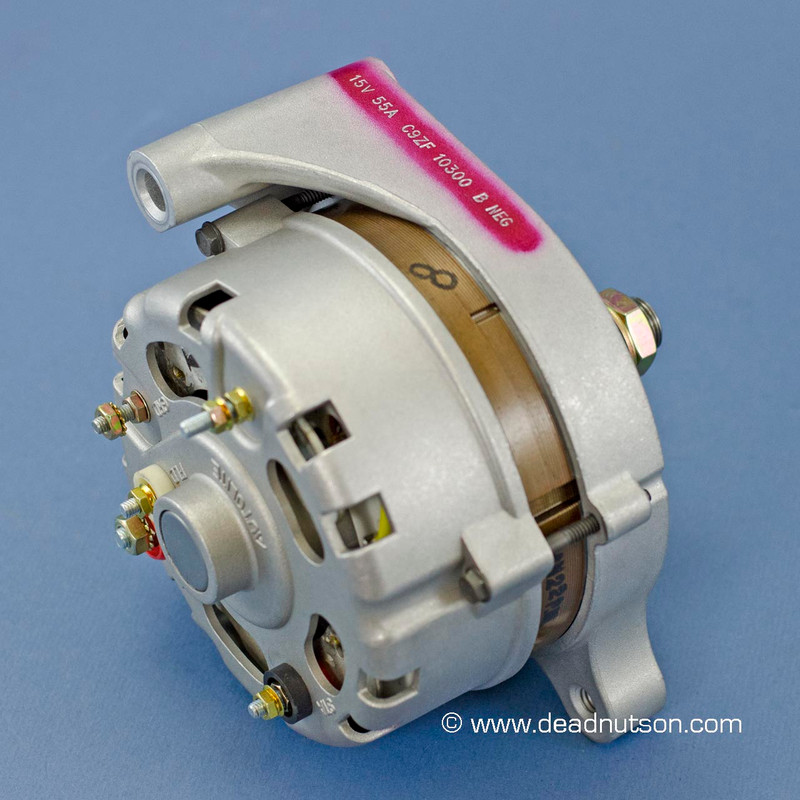Description: C9ZF-10300-B Autolite Alternator
Year: 1969 (after February 1969)
Engine: 428 CJ, 428 SCJ
Power Steering: Yes or No
Air Conditioning: No
Model: Mustang, Shelby GT500
Production date specific: YES, after February 1969
Engineering #: C9ZF-10300-B
Rear housing type: Teardrop AUTOLITE
Output specified on ink stamp: 55 Amps
Actual output: 55 Amps
Fan: 13 blade (sold separately)
Pulley: Double sheave C9AF-10A352-C (sold separately)
Date Codes: 3 (Indicate your cars production date when ordering)
Warranty: 1 Year
Accuracy Rating: 9.5
Best Repro Available: YES
Jack's Comments:
Our concours correct 1969 Autolite alternators are built with 100% new components manufactured to our specifications to be reliable and look factory original. We faithfully reproduced the unique front and rear housings from original Ford engineering drawings, 28 lamination yellow/amber varnished 55 amp stator and we even apply date codes that correspond with your cars production date. Our alternators also come with all the concours correct hardware you need to install your wire harness and fan/pulley.
Concours Notes:
1) Cars produced after February 1969 until the end of 1969 production had the AUTOLITE teardrop style rear housing and the engineering number and alternator specifications die stamped on the front housing. After the ink was applied the alternator specifications were die stamped over the ink to make it easy to read. We painstakingly copied the original font style exactly to make our die stamps so they look exactly like a production alternator. If your Mustang or Shelby has a production date after February 1969 came equipped with a 428 Cobra Jet or Super Cobra Jet with or without power steering this is the correct alternator for your car.
2) Depending on the assembly plant inventory turn over you could see either a ink stamped or die stamped alternator if your car was built in February or March 1969. What we are trying to say is there isn't an exact date the change over occurred so you will need to decide what is right for your car.
3) The red sprayed on ink stripe color identifies this as a 55 amp alternator.
4) The correct cooling fan has 13 blades and it had a yellow zinc plating (also known as zinc dichromate).
5) The correct pulley for this alternator is the C9AF-10A352-C double sheave pulley with a yellow zinc plating (also known as zinc dichromate).
6) The wire harness terminal and nut/pulley hardware had a yellow zinc finish in 1969 (concours correct hardware included).
7) Just like the factory alternators we apply a tiny dob of light brown sealer seen on the rear housing between the rear bearing hub and the FLD terminal. This was used to seal a small hole that allowed a pin to be inserted to hold the brushes in place during assembly.
Do you have more concours details you would like to share? Pictures? We don't know everything so please send us an email and we will post your findings and give you the credit.
Questions & Answers:
Q: How do you decide what date codes are right for my alternator?
A: When you specify your 428 S/CJ production date we take a look at our vintage calendars and select a day one to one and a half months before your car was built. If you would like to specify a date you want your alternator stamped with just let us know in the Special Instructions: box. Note: The stator was manufactured before the alternator itself so the stator inspection date is typically 7-20 days prior to the alternators two final inspection dates.
Q: Where are the date codes located on the alternator?
A: Month, day and shift on stator. Shift, month, day, last digit of year on the side of the rear housing.
Q I'm running a NOS mechanical voltage regulator. Will this alternator make my regulator malfunction like the last alternator I purchased at my local Auto parts store?
A: You won't need to buy another voltage regulator. We build our alternators with components that are compatible with vintage mechanical or the new solid state voltage regulators just for this reason. Note: Voltage regulators are the most common reason your battery is not charging or over charging. We suggest you install a new solid state voltage regulator with your new alternator just to be safe.
Still have questions? Give us a call at 510-903-1059






